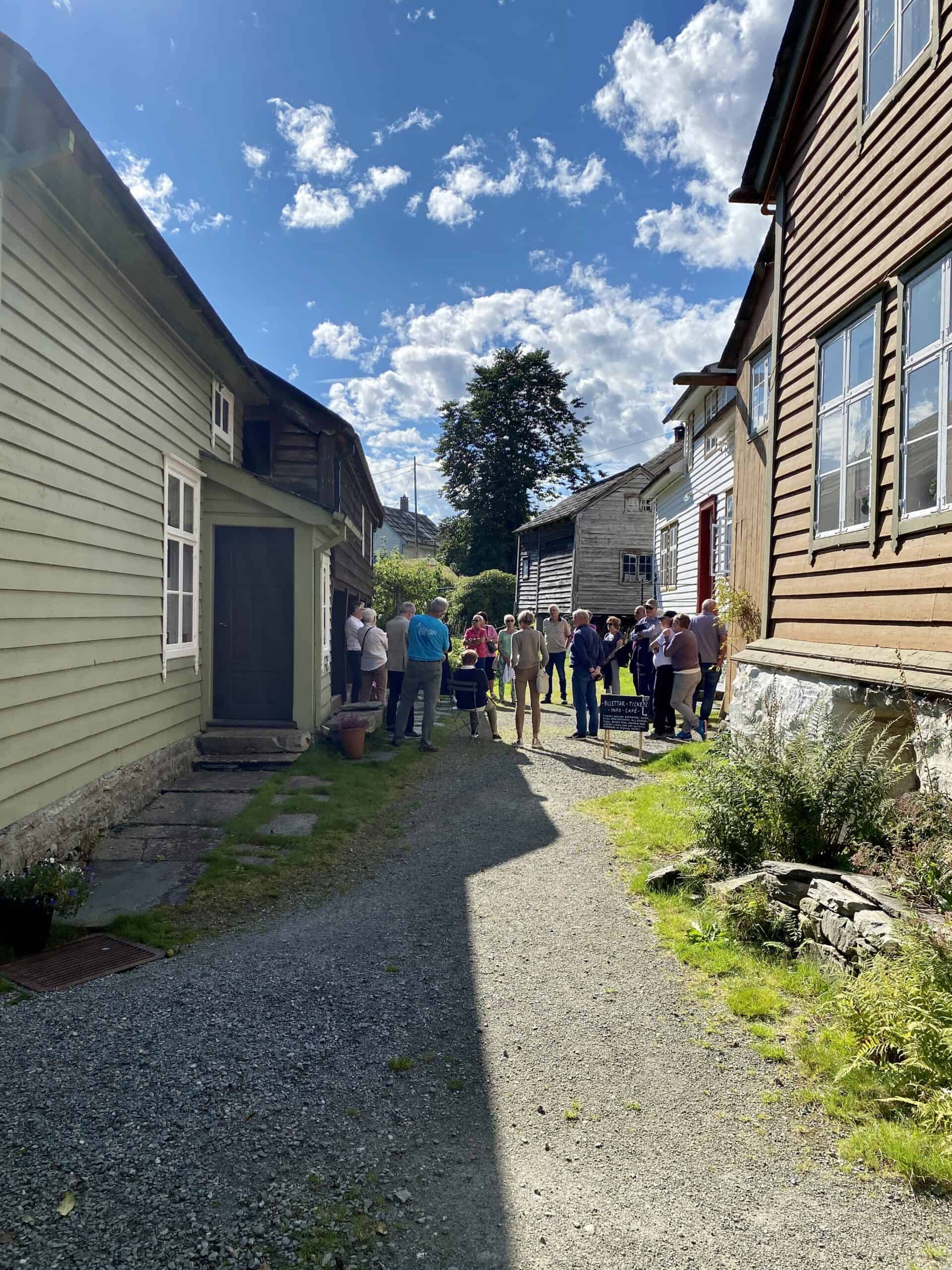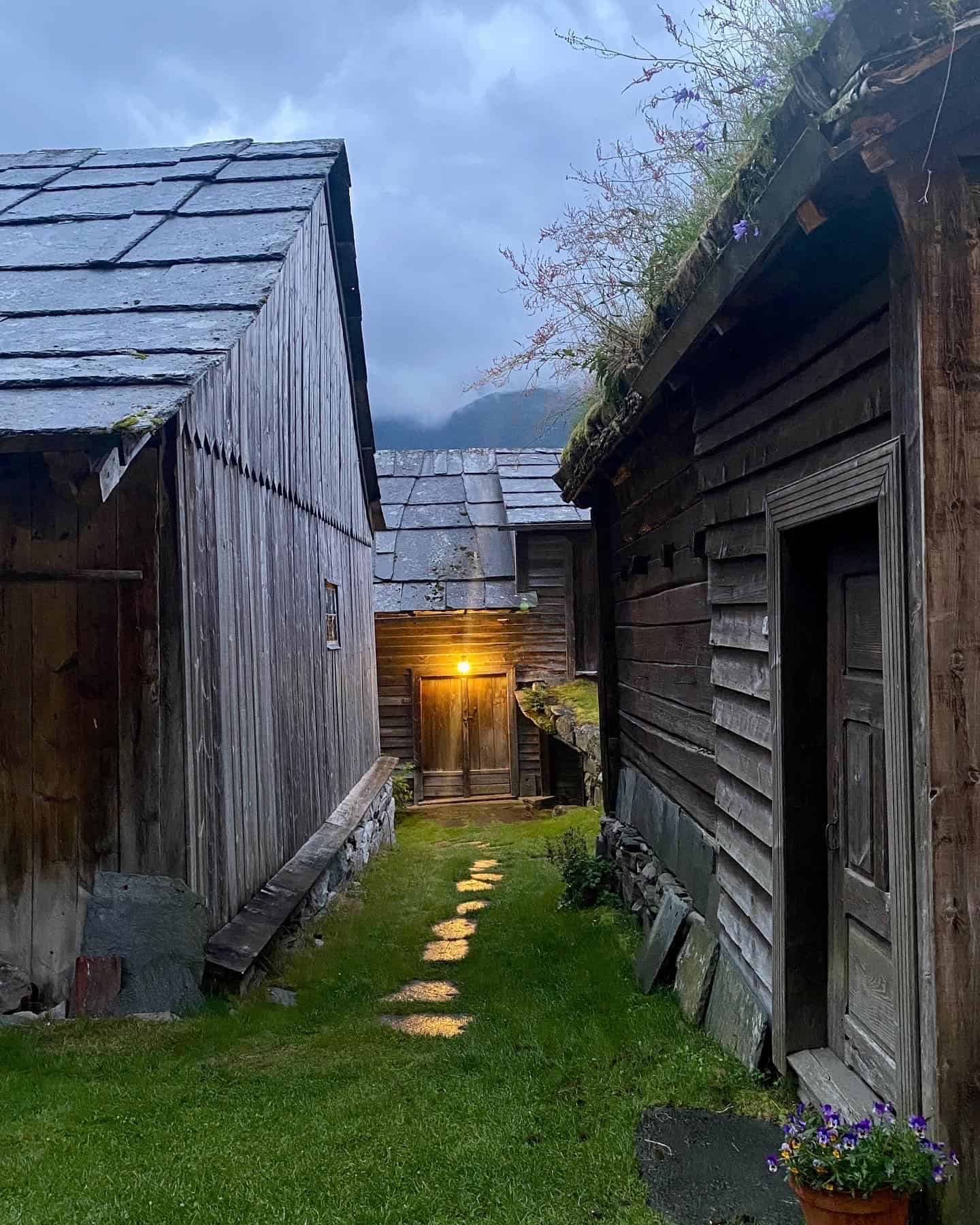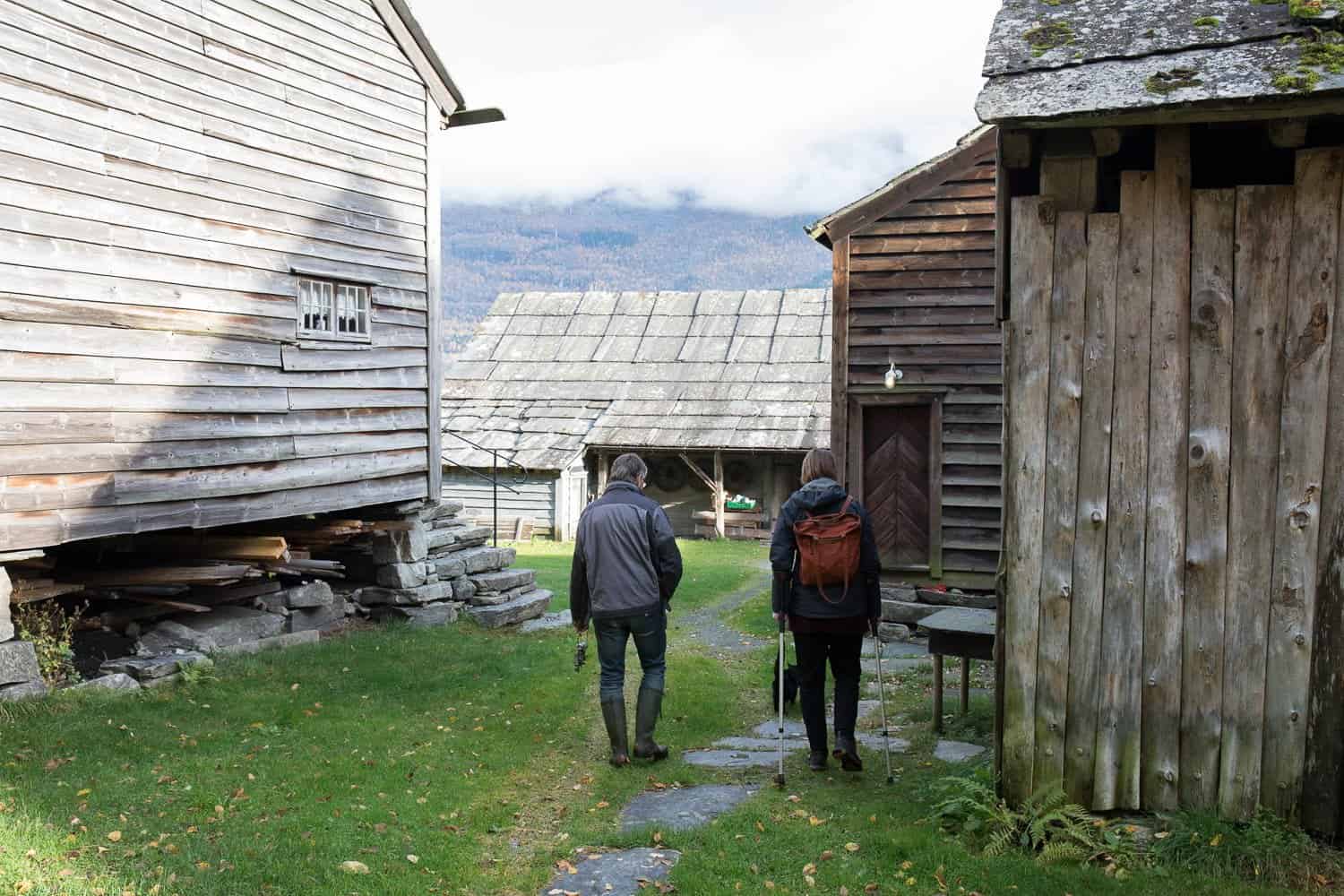


Accessibility in the Farmstead
Do you have a disability and wonder how a visit to Agatunet would work for you?
Feel free to call us at +47 47 47 99 02 to plan your visit, get more information, and allow us to adapt as best we can to your needs.
Agatunet is a historic, protected site, and far from universally designed. We are actively working to improve accessibility and are focused on finding good, respectful solutions to enhance the current situation.
PARKING AND ARRIVAL
We do not have dedicated accessible (HC) parking, and our guest parking is located a few hundred meters north of the farmstead.
However: just below Agatunet, there is a staff parking area that you may use by agreement if you are arriving in a specially adapted vehicle.
It is also possible to drive up a small tractor road on the northern side of the site to drop people off in our outdoor area and thereby avoid the uphill climb. Please note that the top of this road is not flat.
OUTDOOR AREA
The main road up to Agatunet is fairly well surfaced but sloped, and requires strong arm power if you’re using a manual wheelchair. Entry is free for companions/carers.
The central outdoor area is spacious, flat, and surfaced with compacted gravel, making it relatively easy to move around.
Behind the main courtyard, the terrain includes grass and stepping stones, which can be challenging for wheelchair users or others with mobility issues – especially without a companion. Surfaces may be slippery, particularly in wet weather.
We have plenty of outdoor seating – both at the café area and benches scattered around the site.
TOILETS
Unfortunately, we do not yet have universally designed toilet facilities.
Our restroom building has a step and a high threshold, and limited space inside.
BUILDINGS
As of 2023, most buildings are not accessible by wheelchair.
The house that contains our café, reception, art exhibition, and museum shop can be accessed via a temporary ramp at the back entrance. However, please note that there are high thresholds inside, and some doorways are only 80 cm wide.
We also have a step-free venue in Asbjørnsløa, used for events and food service. The path to this building consists of grass and stepping stones, on a light slope.
Several of the houses open to visitors have stairs at the entrance. These are often steep and tall. Handrails are present in most locations, but they are original and do not meet modern technical standards. Some are shorter than the staircase itself – so please be cautious.
GUIDED TOURS, EXHIBITIONS, HEARING AND VISION
We offer a thorough written guide you can borrow during your visit if you’d like to explore on your own or learn about buildings that are difficult to access. This guide is also available online for screen readers – QR code available at the reception/café.
The Lagmannsstova – the medieval courthouse visited at the end of the tour – is accessed by a steep staircase with high steps. Descending can be particularly challenging if you have limited mobility.
In the cellars of the medieval building, used for exhibitions and children’s activities, there is a physical barrier at the entrance – a tall crossbeam.
Some buildings have no electricity and are only lit by natural light.
Others have electric lighting, but it may be insufficient.
We are working on audio description of exhibits, providing voice amplifiers for our guides, and finding better solutions for building access.